In 1984, the White Strand in Cahirsiveen, Co Kerry, across the water from the town that lies between mountain and sea, was a local courting spot. But on Saturday April 14th, 1984, the picturesque beach became something else.
Catherine Cournane, daughter of local undertaker Tom Cournane, was 15 at the time. At around 8pm her parents were preparing to settle in to watch the Late Late Show, and Catherine had been sent to the shop down the street.
When she returned, her late mother Kit said: “God help us, a child has been found on the White Strand.”
Tom Cournane had a garage and was also the local undertaker. He was accustomed to dealing with tragedies, but was “very upset” by this death, Catherine remembers, and had had christened the baby with water from a local stream.
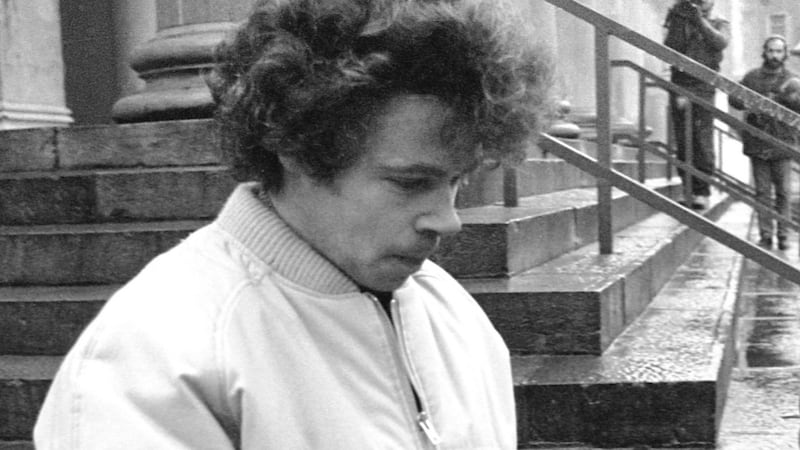
“He brought it for the [postmortem], not in the hearse but in the back of his car in a tiny coffin. I remember looking at the coffin of the baby,” Catherine says.
She remembers the murder squad arriving and the interrogation of young women as “hot and heavy”. They interviewed all the young girls, asking if they had boyfriends, she says. “And if they had they would be asked about the nature of that relationship, about how intimate it was.”
Parents worried. The fashion was baggy clothes, and mothers worried they might have missed a daughter’s pregnancy, she says.
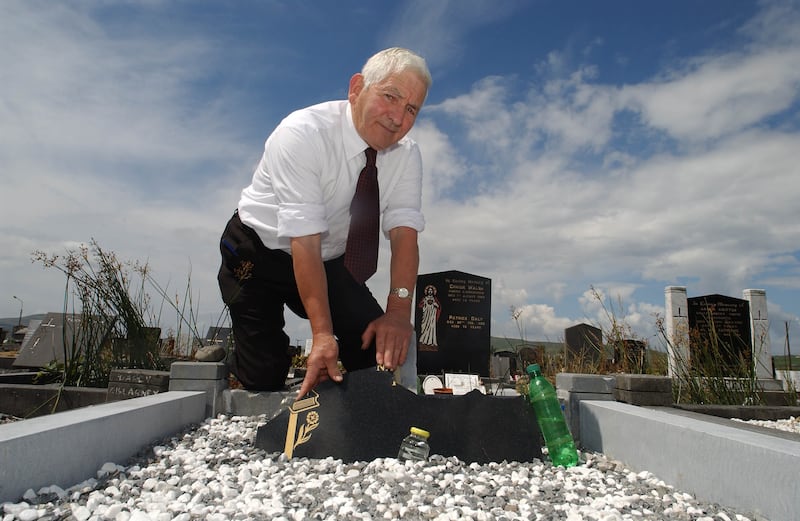
Her father asked her to organise a few of her classmates from St John Bosco Secondary School for the funeral. And around 4pm, after school as her father carried the little white coffin into the cemetery, and the girls in uniform lined up, all the school buses stopped and lined up and the boys and girls lined the cemetery and sang hymns.
The ‘awfulness’
Ger Colleran remembers listening to a woman one day in 1985 – a woman outside the Kerry Babies tribunal. The woman had come to Tralee to show solidarity with Joanne Hayes, whose verbal evisceration at the inquiry would be likened to a medieval witch hunt.
“There’s a great understanding in rural Ireland for the awfulness that can befall a woman,” Colleran, editor of Kerry’s Eye newspaper, said this week, recalling the events of 1984 and 1985. He says the events were “the most formative moment of my life – when you saw what they did to an innocent family”.
By “they” he means official Ireland.
The woman outside the tribunal told Colleran she lived beside a quarry and her family was well used to finding dead babies there. In fact, she recalled her kind-hearted father bringing two into the house one day, one of them still just alive but not for long.
The babies were brought to the quarry because that was what some people did when they had an unwanted pregnancy – got rid of it there, or in a boghole, or maybe in the dustbin. Or gave birth furtively at home, or at a grotto to the Virgin Mary, like 15-year-old Ann Lovett in Co Longford in January 1984, who died bleeding and alone.
The village
The Hayes family are from Abberdorney, just north of Tralee. Colleran, co-author (with Michael O’Regan of The Irish Times) of Dark Secrets, a study of the Kerry Babies case, remembers the community and the reaction to what befell Joanne Hayes.
“There was a great respect and a shared hurt in the community for what happened to her,” he says.
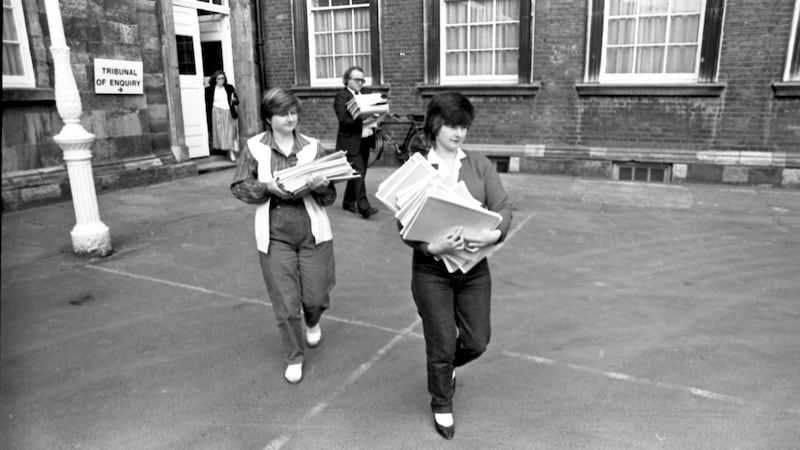
That protective reaction, a metaphorical wrapping of arms around Hayes to shield her from further harm, was evident this week in the wake of the Garda Síochána and State apologies to her and her family, for the way they had been treated.
Abbeydorney – jeeringly referred to by one garda, PJ Browne, in 1984 as “Babby-dorney” – is a crossroads village of a few dozen homes, one of them Joanne’s. In 1984, she lived on her Aunt Bridie’s small farm nearby.
The village has two supermarkets, a post office and church and not a lot besides. This week, the community did what it has been doing since 1984: rallied to the Hayeses and protected them, guarding Joanne’s privacy by not talking to reporters about her and the events that made her a household name in Ireland.
“We’d prefer not to be in the news,” was how the woman in the parish office put it – gently and with a smile, but firmly nonetheless.
The tribunal
It’s not hard to understand why the community in Abbeydorney remains protective. The tribunal was supposed to inquire into the circumstances leading to Joanne Hayes being charged with murder and other members of her family charged with concealment, and how they were treated by gardaí.
With the reputation of the gardaí behind the Kerry Babies case now in tatters, the same adverse judgment must apply to the late Mr Justice Lynch and his incredible report
But because of the way the tribunal chairman, Mr Justice Kevin Lynch of the High Court, conducted proceedings, it became in effect a trial of Joanne Hayes.
She was intensively cross-examined by Martin Kennedy, barrister for senior gardaí – spending five days on the stand, the longest anyone had spent on the stand in Ireland up to that point. Hayes was asked more than 2,000 questions – many of them about her sex life, some of them prurient, judgmental and gynaecological in their detail.
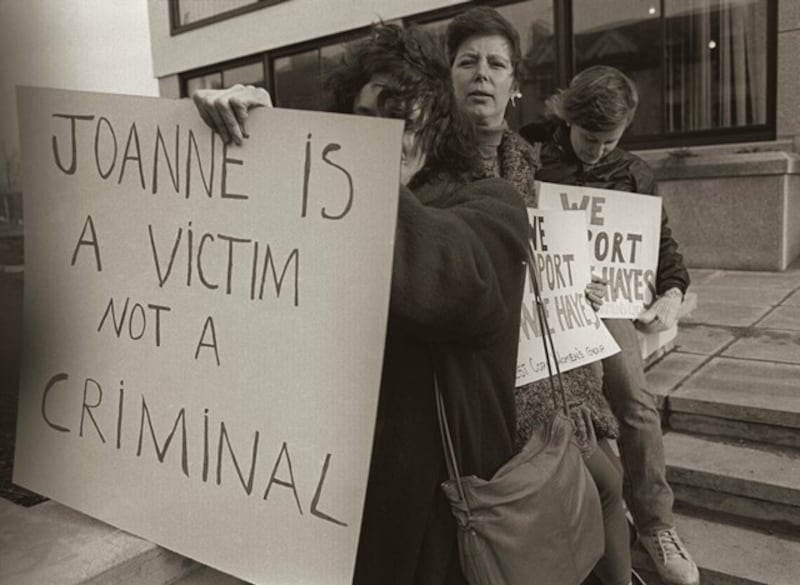
Lynch wasn’t at all happy – not about the questioning (that was fine), but about the protests begun by the villagers of Abbeydorney. They inspired a further demonstration, mainly by women, but supported by some men also, whom he branded as nothing more than “raucous, ignorant, urban dwellers”. He threatened to jail them if they insulted the tribunal or impeded its work.
With the reputation of the gardaí behind the Kerry Babies case now in tatters, the same adverse judgment must apply to the late Mr Justice Lynch and his incredible report.
It exonerated the investigating gardaí, levelling only the mildest criticism at them. It branded Hayes a killer of her own baby, a claim not supported by forensics, and facilitated the brutalising of her in public.
The first baby
To get an idea how strange the Kerry Babies saga was, we need to remind ourselves about the “third Kerry baby”, a spectre that emerged briefly over three decades ago only to vanish again. This was the Azores Baby.
The first Kerry baby was born to Joanne Hayes, on the night of April 12th, 1984, at her Aunt Bridie’s farm where she lived with her mother, Mary, her brothers Michael and Edmund (Ned), her sister Kathleen and her daughter Yvonne.
It is unclear whether this baby, also a boy, was born alive, or died very soon afterwards. The State pathologist at the time, Dr John Harbison, said that by the time he had examined the remains, decomposition has begun and he could not say the baby had drawn breath.
In any event, Joanne Hayes went to the doctor next day because she had lost so much blood. She told the doctor she thought she had had a miscarriage and was referred to Tralee hospital.
But she went home instead. There, she put the body of her dead baby in a plastic bag and hid it on the farm, only going to hospital the next day, April 14th.
The second baby
This was the day that, by coincidence, the second Kerry baby – the Cahersiveen baby, increasingly now referred to as Baby John – was found on White Strand, five kilometres from the town. The beach is some 80km south of Hayes’s home at Abberdorney.
Baby John was new born and perhaps a few days old but had been stabbed to death 28 times and his neck was broken.
Gardaí dispatched from Dublin to investigate the death – including Kerry natives John Courtney, PJ Browne and Gerry O’Carroll – learned of Hayes’s attendance at hospital, apparently after a lengthy pregnancy but with no sign of having had a baby.
On May 1st, Hayes and her family went by request to Tralee Garda station. They were not arrested and could have left at any time, though they did not realise this.
What emerged from the Garda station were detailed and graphic confessions, about Joanne Hayes having killed Baby John and thrown his body into the sea off Slea Head at the end of the Dingle Peninsula.
Joanne, Kathleen, Edmund, Michael and Mary Hayes all told how Joanne had stabbed Baby John with a kitchen knife and bashed his head with a bath brush. “There was blood everywhere,” Joanne allegedly confessed.
“I had to kill him because of the shame it was going to bring on my family,” gardaí claimed she said. “When the body of the baby was found at Cahersiveen I knew deep down it was my baby.”
It was a post-facto theory to fit the known evidence
But when Joanne Hayes’s own baby was found, exactly where she said it was, gardaí had a problem. They “solved” this by asserting that Hayes had had twins. When blood tests proved that Baby John could not be hers (a fact reaffirmed this week by the DNA test result), gardaí advanced a theory of “superfecundation” – sex with two different men, resulting in two different blood group babies.
A third baby
When the implausibility of this sank in, the gardaí advanced the theory of the third baby – yes, Joanne Hayes had had twins, went this theory, and she murdered one exactly the same way Baby John had been killed.
It was a post-facto theory to fit the known evidence. This third baby was dumped at sea, just like Baby John, and was still out at sea, floating around the Atlantic in a bag. So outlandish was the theory of the Azores Baby that it was not really pursued as an explanation.
The Hayes family withdrew all their statements and made allegations of mistreatment by gardaí, claiming they had been pressurised and that some Garda conduct was inappropriate. The director of public prosecutions, Eamonn Barnes, withdraw charges at the District Court.
PJ Browne, promoted subsequently to superintendent, was alleged to have sat Hayes on his knee during questioning. He denied this, saying he merely let her rest her head on his shoulder, comforting her in distress.
‘A sexual predator’
In a searing analysis of the case, Sexual Transgression and Scapegoats: A Case Study from Modern Ireland (Sexualities, 2002), sociologist Tom Inglis argues that Joanna Hayes was portrayed at the tribunal as a sexual predator because she was a threat to a long-established order.
“It had less to do with any crime she might have committed, and more to do with challenging the traditional Catholic habitus within which Irish male power had been created and maintained for generations,” writes Inglis.
“What was central to this crisis was not so much that Joanne Hayes may, as Justice Lynch claimed, have done away with her baby, but that she was seen as a sexual predator luring men to their downfall.”
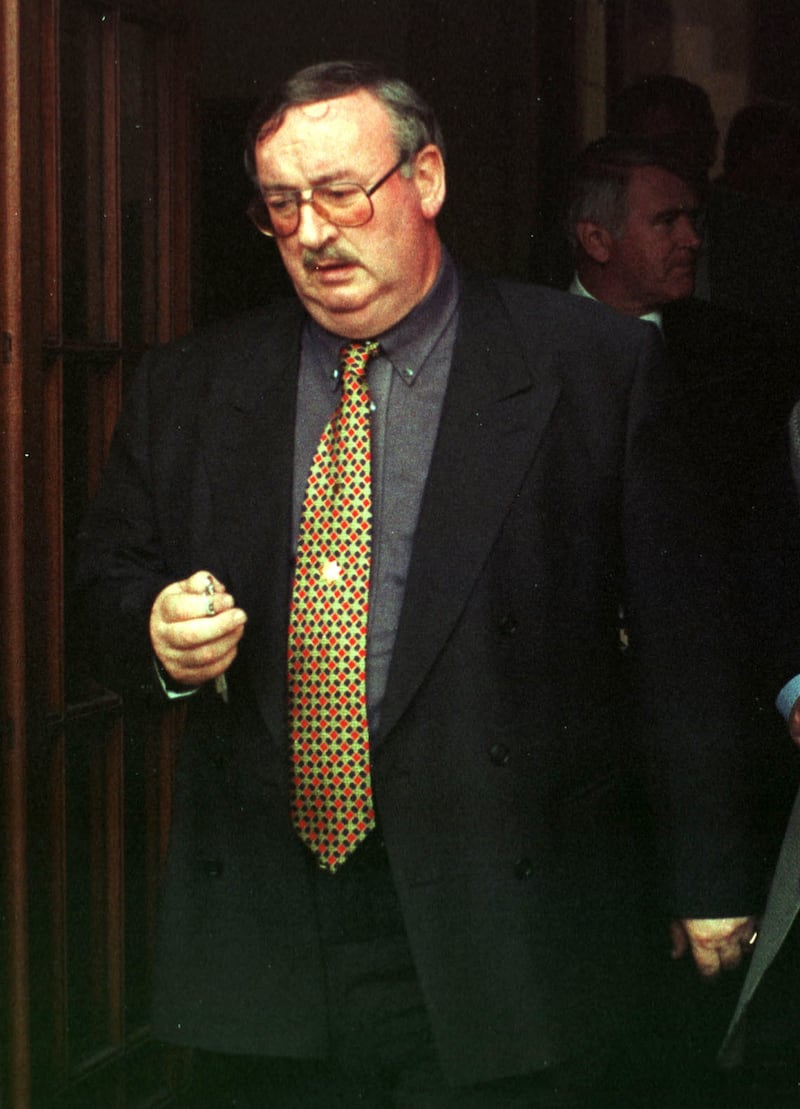
As Inglis observes, Lynch blamed Hayes for initiating and having an affair leading to her pregnancy. This is a view apparently shared by Gerry O’Carroll, number two on the investigating team at the time, later promoted to inspector and who this week did not accept that DNA evidence had proven conclusively that Baby John had no connection to Joanne Hayes. He wants both babies exhumed and DNA tested, promising to accept the result.
At the tribunal, O’Carroll spoke about sex. “We live in a promiscuous society,” he said, “and there have been umpteen cases that I know myself of neighbours who live beside each other and of neighbours who have got pregnant by their next-door neighbours.”
The grave
Undertaker Tom Cournane is now 88 and ill, but his daughter Catherine says he always felt the baby was “local”.
“It hadn’t been long in the water. Nobody believes Baby John was washed up on shore. The tides and the way the White Strand is positioned between Valentia and Beginish would make it almost impossible.”
"Mistakes were made and authority went to defend its position," Colleran says. "I see this as a continuum. Official Ireland is rotten to the core – politicians, the judiciary, the guards, the media"
Tom Cournane grew firmer in this view with various attacks on the baby’s headstone over the years. “He replaced it every time. Then, when the baby would have turned 21, the headstone was completely destroyed.
“There is a hatred still. And we would be afraid with all the attention the grave will be attacked again,” Catherine said.
Inexcusable
Ger Colleran doesn’t buy the gender-centric analysis. “I don’t recognise this ‘it was a different world in 1984’. It wasn’t and we knew it was wrong then.”
The tribunal was “hateful” and Hayes’s inquisitor Martin Kennedy “behaved without conscience”. Joanne Hayes was a threat to power, he maintains.
“Mistakes were made and authority went to defend its position,” he says. “I see this as a continuum. Official Ireland is rotten to the core – politicians, the judiciary, the guards, the media.”
Family friend and local Fianna Fáil TD John Brassil says that from now on, no one should link Joanne Hayes in any way to Baby John.
“The treatment of her and her family was heavy-handed, inexcusable and a violation of their rights as human beings. We are all guilty of allowing it happen and not stopping it,” he says. “All that girl wants is to be left alone and get on with her life.”
The Hayes family statements, all of them, were false. That is a simple statement of fact, as matters stand, because the State and the Garda now accept the contents of the statements cannot be true.
The central question in 1984, when the charges were dropped, remains: why did a whole family confess to matters that were not true? The only other people present when the statements were made were gardaí.
Maybe they can explain.

















